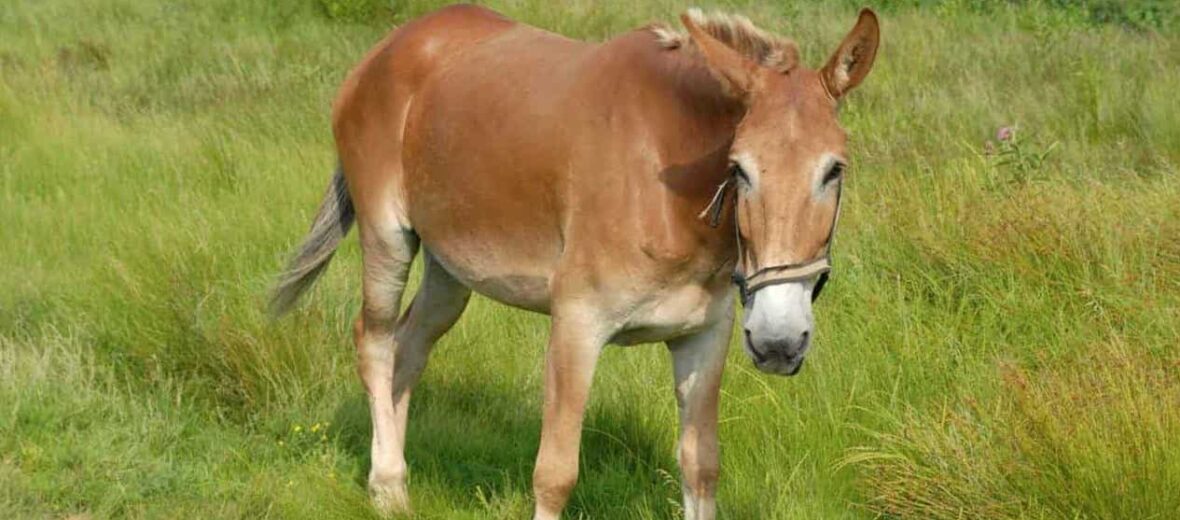
A mule is the creation of the interbreeding of a male donkey “Jack” and a female horse “mare”. Mules are 1 of the most frequently utilized working animals in the world and are highly sought after for their durability and gentle disposition. The proper name for a mule is a horse mule, but they are also called Johns, John mules or Jack mules. I typically don’t write articles on hybrids, but for the mule I’ll make an exception. These critters are not listed by the IUCN as they are so common, the world over.
First the Stats…
Scientific name: Equus asinus aka Equus caballus
Weight: Up to 1,000 lbs.
Height: Up to 5.6 feet, at the shoulder
Length: Up to 7 feet
Lifespan: Up to 50 years
Now on to the Facts!
1.) Mules have thicker skin than horses, which allows them to tolerate temperature extremes much better.
2.) Due to the hybridization process, mules are typically more resistant to diseases than their donkey and horse parents. However, they’re still prone to laminitis (inflammation of the laminae of the foot) and can still get sick with the same illnesses, it’s just not as common for this to happen.
3.) Mules can run up to 20 mph.
4.) Mules are 99.9% sterile due to an uneven chromosome count which occurs during the interbreeding process. However, in rare cases, female mules have been known to give birth to foals. It’s just not all that common.
5.) They are very trainable and intelligent. However, their instinct for self-preservation typically causes them to be careful and they will resist being overworked. This leads to the misnomer of being stubborn. Anyone who says they’re stubborn most likely has just been outsmarted by one. Come on, bro. Be honest.
But wait, there’s more on the mule!
6.) Mules eat less and have more stamina than horses of equal height and weight. This makes them very durable working animals.
7.) Besides braying like a donkey or whinnying like a horse, mules make sounds that combine both calls and have even been known to whimper when excited or scared.
Did you know…?
In the 1980s the US military used upwards of 10,000 mules to carry supplies and weapons through Afghanistan’s rough and rugged terrain to mujahedeen camps.
8.) A mule can carry up to 20% of its body weight.
9.) Like their parents, mules are herbivores (eat plants) that eat grasses, vegetables, and weeds.
10.) Their main predators are wolves, foxes, mountain lions, and coyotes.
But wait, there’s still more on the mule!
11.) Horses have 64 chromosomes, donkeys have 62, mules have uneven number of chromosomes: 63, which explains why they are sterile.
12.) China breeds the greatest number of mules in the world. The next in line is Mexico.
13.) Although typically docile in temperament, mules pack quite a kick! Plus they are able to not only kick backwards, but also to the side with near equal force.
14.) Many ranchers will use mules as a warning beacon against predatory animals as they are quick to alert the rest of the herd of pending danger.
Now a Short Mule Video!
Also, check out the Critter Science YouTube channel. Videos added frequently!
Want to suggest a critter for me to write about? Let me know here.



